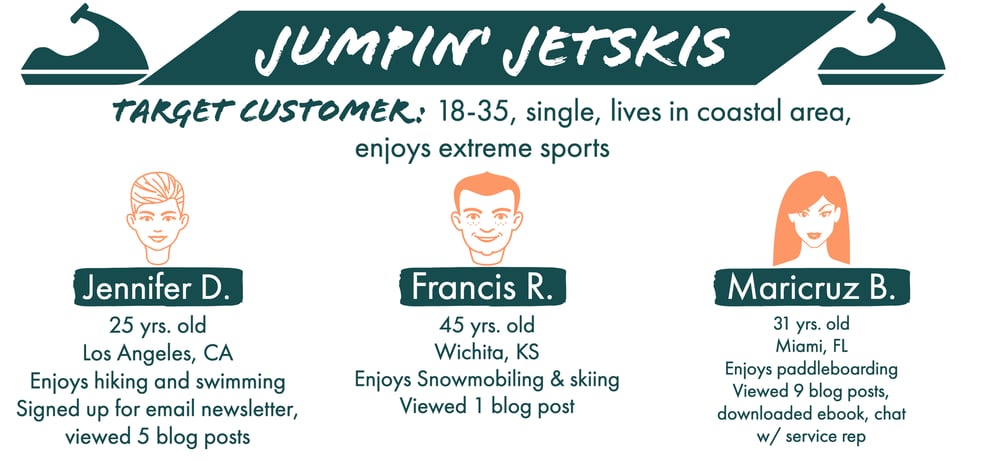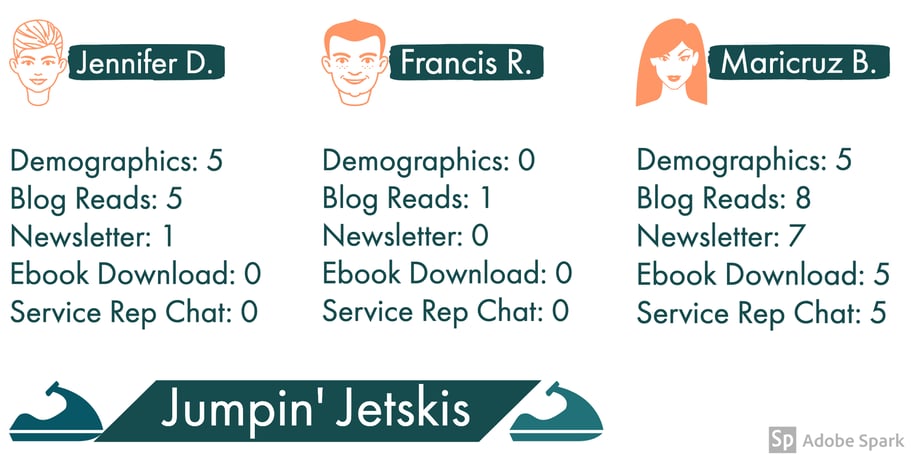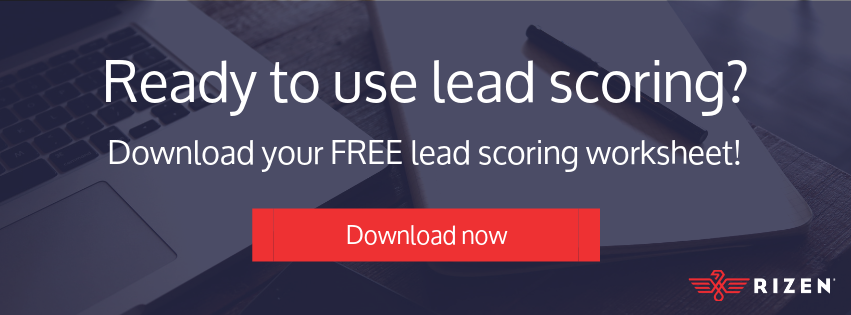If your company is overflowing with leads, but you're not sure what to do next, lead scoring is the answer. This method is an extremely effective strategy for identifying who's really interested in purchasing your product. The result? More quality leads for your sales team to spend their time on!
How Lead Scoring Works
Think of this strategy as a rating system for your potential customers. When combing through your leads, the goal is to assign points based on factors signaling a readiness to purchase. It's not unlike judges using scorecards at an Olympic event! This process is designed to assist both sales and marketing teams to prioritize that long list of leads, increasing your rate of turning leads into customers. Most lead scoring models rate on a scale of 0-100, but can adopt a scale of your own as long as its clear and effective for your employees. At Rizen, we recommend a 0-10 scale for rating leads. Check out our free Lead Scoring Checklist you can implement immediately at your company.
What Factors Should I Include When Rating Leads?
Deciding on factors to include in your lead scoring system will depend entirely on steps your company has in place to move customers closer to a sale. Some examples include demographic information, content engagement, or online behavior. Think about what factors would rate a lead as being "more ready" to purchase, based on your content marketing. Let's take a look at some fictional leads to illustrate a lead scoring system in action:

Our fictional company, Jumpin' Jetskis, has already done their research and know what their target customer looks like. All of these individuals have visited the site, looked at blog posts, and are solidly in the "awareness" stage of a buyer's journey. This is where lead scoring comes in. We have five categories we'll be measuring our target customers on: demographics (listed in image above), how many times they click to read a blog post, subscribing to the email newsletter, downloading the ebook offer, or chatting/emailing with a customer service rep. Some interactions are more important than others, so we want to weight them based on how critical they are for leading to a sale. Here's how Jumpin' Jetskis laid out theirs:
| Category | Weight Percentage |
| Demographics: | 25% |
| Blog Reads: | 10% |
| Newsletter: | 15% |
| eBook Download: | 25% |
| Service Rep Chat: | 25% |
Using a scale of 1-10, here's what a lead scoring card would look like. Notice how easy it is to see how leads have been interacting with your content and how ready they are to purchase. It's clear Maricruz is the "hot prospect" of the three. Sales teams can view this and know exactly how to approach each customer, and whom to prioritize as "hot prospects." By assigning points to a lead based on how well they fit into your important factors, your sales team will know which leads are best to pursue, and how to approach them.

Coming Up With a Ratings Formula
While we've discussed using a more simple numbering formula, such as a 1-10 scale, you'll still need to determine what a "5" rating means compared to a "7" to prevent confusion among your marketing and sales teams. The best way to go about this is by creating a common language for scoring behaviors. Get your teams together and answer these four questions:
- What content are we currently offering that's actionable?
- How important is that action to moving the lead along in their journey?
- What action(s) should determine a shift from interest to intent?
- What steps should be taken when a lead reaches a certain score?
Your sales teams will have especially valuable insight to provide during this process. After all, they're the "boots on the ground" when it comes to direct customer interaction. They know from experience what content most helped turn leads into customers and what didn't. Find out what those pieces are, and assign points accordingly.
Next Steps: Adopting Predictive Lead Scoring
Implementing a lead scoring system can greatly improve your sales figures and conversion rates. But lead scoring systems are not one-time creations; they constantly need tweaking and updating. Employee and customer feedback, along with the creation of new marketing content, will have you constantly adjusting your scoring system to ensure it remains accurate. That takes time, which can often be better spent building important relationships with your customers!
As your company grows, consider adopting a service that includes predictive scoring. Predictive scoring utilizes machine learning to do the hard work of sifting and analyzing data to identify your best leads so you don't have to do it manually. This lets you and your entire sales team spend more time focusing on engaging with prioritized leads and less time calculating whom to go after. The best part about predictive scoring? The use of machine learning means the more you use it, the smarter it will be in scoring your leads!
If you haven't implemented a lead scoring system at your company, now is the time! With proper planning and regular updating, you can ensure your sales team gets the most qualified prospects, which will then likely close at a higher rate. Lead scoring is also a leading strategy in the world of inbound marketing, a cutting-edge method for reaching today's customers. When you're ready to take the next step and leverage machine learning to do the heavy lifting, consider adopting a customer relationship management tool such as Hubspot. Rizen can help you make the switch when you're ready, so let us know when we can help by contacting us!




![Reignite Your Millennial Marketing Efforts With These [On Fleek] Ideas](https://blog.gorizen.com/hs-fs/hubfs/Podcast/009%20-%20Millennial%20Marketing%20Blog.gif?length=600&name=009%20-%20Millennial%20Marketing%20Blog.gif)


No Comments Yet
Let us know what you think